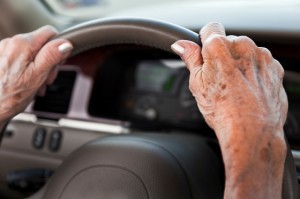It is well known that there is a higher risk of a collision if you are driving for work purposes than if you are driving for non-work purposes. When discussing this increased risk, the topic most frequently turns to how much these collisions cost the employer.
 While this is obviously an important issue for companies to consider, being involved in a vehicle collision may also have serious consequences for the employee involved in the crash. Not only is there a risk of physical injury, but there can also be negative psychological effects after being involved in a collision, which are far less discussed and acknowledged.
While this is obviously an important issue for companies to consider, being involved in a vehicle collision may also have serious consequences for the employee involved in the crash. Not only is there a risk of physical injury, but there can also be negative psychological effects after being involved in a collision, which are far less discussed and acknowledged.
One study, conducted by Jennifer Lucas and published in the Transportation Research Journal in 2003, gave a range of psychological questionnaires to 124 drivers, 42 of whom had been involved in at least one motor vehicle collision within the past five years.
Drivers who had been involved in a collision reported significantly greater fear of personal safety, worries about driving and being more stressed when driving. There were also some sex differences in the psychological consequences of being involved in a motor vehicle collision. Women were significantly more likely to report an increased fear of personal safety when driving than men. However, men and women reported very similar levels of worries and stresses about driving.
Studies such as the one conducted by Lucas show that being involved in a motor vehicle collision can have negative psychological consequences, but for some people these consequences are more severe and can develop into a clinical psychological condition.
A key distinction when considering the psychological consequences of being involved in a collision is the difference between early and late psychological trauma. Early psychological traumas occur immediately after the incident, but tend to be relatively short lived. In contrast late psychological trauma can be longer lasting.
After being involved in an incident people are often described as being in “shock”. This is an early reaction to being involved in a traumatic event and it is more accurately called an acute stress reaction. This response usually occurs within a few minutes of the traumatic experience and people may report feeling “fuzzy headed”, having anxiety and depression, as well as fear. They may even withdraw from situations that remind them about the event. Typically this acute stress reaction lasts for a few days and the individual suffers no further negative psychological consequences.
A more severe and serious response to being involved in a collision is Post Traumatic Stress Disorder (PTSD). Many research papers have investigated PTSD following vehicle collisions, and while some find that up to 50% of individuals involved in a collision develop PTSD, most studies report a figure closer to 10-15%.
The key distinction between PTSD and an acute stress reaction is that PTSD occurs for longer than one month after the incident. In fact, the symptoms may not even emerge until up to six months after the traumatic experience.
Typically individuals who have PTSD report frequent nightmares and flashbacks, where they have vivid memories of the incident, to the point where they feel like they are reliving the traumatic experience. They are also likely to avoid being in situations that remind them of the incident, so they may avoid having to drive altogether. According to the current clinical diagnosis criteria, if these negative consequences last for longer than a month, and impact on the person’s personal, social or professional life, it is possible that the individual may be diagnosed with clinical PTSD.
Not everyone develops PTSD, so why might some people be more likely to develop PTSD after a vehicle collision? A recent study conducted at the University of Lyon in France found that people were more likely to develop PTSD if they either suffered an injury which was still causing pain six months later or if they felt that they were not responsible for the incident in the first place.
One of the most frequently used treatments for PTSD is cognitive behavioural therapy (CBT) and research has examined how effective this method of treatment might be for people experiencing PTSD following a motor vehicle collision.
Gayle Beck and colleagues from the University of Memphis compared the severity of PTSD symptoms in individuals who had been diagnosed with PTSD after being involved in a collision. Half of the participants in the study received group CBT, whereas the other half received no CBT. For those in the treatment group, after three months only 12% still met the criteria for clinical PTSD. In comparison, 69% of those in the no treatment group still met the clinical criteria.
All organisations that employ people who drive as part of their job have a legal responsibility towards their safety. Most companies adopt policies focussed on reducing the risk of vehicle collisions. Whilst this is an essential aspect of road safety, perhaps companies could also consider implementing policies to help employees who are involved in vehicle collisions return to work in full psychological health as soon as possible.
This would not only avoid financial losses for the company, but would also reduce stress and anxiety for employees.
Dr Victoria Bourne (BA Hons, DPhil)
Consultant to Driving Risk Management ltd






